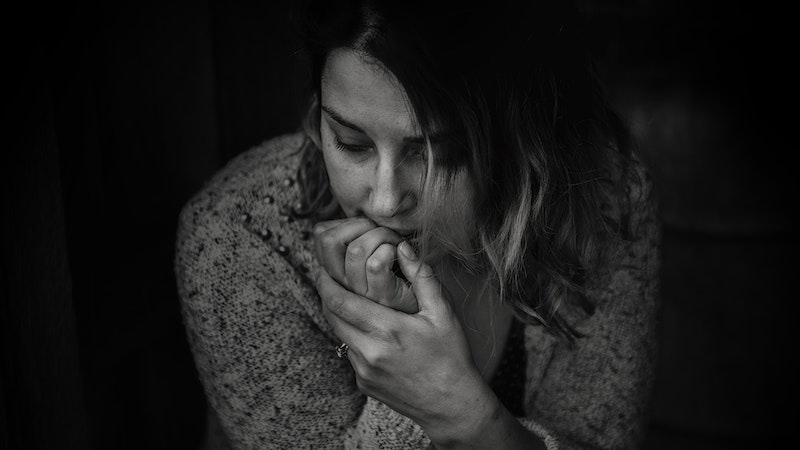Dermatophagia: How to Stop Biting Your Skin
Dermatophagia is a compulsive disorder characterized by the persistent biting, chewing, or picking of the skin, usually on the fingers and/or around the nails. It is often considered a form of obsessive-compulsive disorder (OCD) or a body-focused repetitive behavior (BFRB).

Signs of Dermatophagia
Dermatophagia is a compulsive behavior characterized by the persistent biting, chewing, or picking of the skin, usually on the fingers and/or around the nails. People with dermatophagia often engage in the behavior as a way to relieve stress, anxiety, or boredom, and may experience a sense of relief or satisfaction from the behavior. However, the behavior can also cause physical damage to the skin, including bleeding, infection, scarring, and disfigurement.
Some of the signs of dermatophagia may include:
- Redness or swelling: The affected area may become red or swollen as a result of the constant biting or picking.
- Skin damage: Dermatophagia can cause physical damage to the skin, including bleeding, scabbing, and even scarring over time.
- Calluses or rough skin: Chronic biting or picking can lead to thickened or rough skin in the affected area.
- Anxiety or stress: Dermatophagia often occurs in response to stress or anxiety, and may be a way to relieve tension or nervous energy.
- Social withdrawal: People with dermatophagia may feel embarrassed or ashamed about their behavior and may avoid social situations as a result.
- Difficulty completing tasks: Dermatophagia can be distracting and may interfere with the ability to complete tasks, such as typing or writing.
- Infection: The constant picking or biting can lead to infections of the skin or nails, which can be painful and require medical treatment.
If you are experiencing any of these signs or symptoms, it’s important to seek help from a mental health professional, as dermatophagia can be difficult to manage on your own and may require professional treatment.
Causes
The exact cause of dermatophagia is not known, but it is often considered a form of obsessive-compulsive disorder (OCD) or a body-focused repetitive behavior (BFRB). People with dermatophagia may engage in the behavior as a way to relieve stress, anxiety, or boredom, or as a way to cope with negative emotions.
Some of the factors that may contribute to the development of dermatophagia include:
- Genetics: Some studies suggest that genetics may play a role in the development of OCD and related disorders, including dermatophagia.
- Neurotransmitters: Imbalances in certain neurotransmitters, such as serotonin and dopamine, may contribute to the development of dermatophagia.
- Environmental factors: Traumatic events or stressful life events may trigger the onset of dermatophagia, especially in individuals who are already predisposed to the disorder.
- Perfectionism: Some people with dermatophagia may be driven by a desire for perfection and may engage in the behavior as a way to achieve a sense of control or perfectionism.
- Coping mechanisms: People with dermatophagia may use the behavior as a way to cope with negative emotions, such as anxiety or stress.
Treatment
Treatment for dermatophagia usually involves a combination of therapy and medication. Cognitive behavioral therapy (CBT) is often used to help individuals identify and modify the thoughts and behaviors that trigger the skin-picking, and to develop coping strategies to manage stress and anxiety. Additionally, medications such as antidepressants or anti-anxiety medications may be prescribed to help manage the symptoms.
Other strategies that may be helpful in managing dermatophagia include:
- Covering the affected areas with bandages or gloves to reduce access to the skin.
- Finding alternative behaviors or distractions, such as fidget toys or stress balls, to replace the skin-picking.
- Engaging in stress-reducing activities, such as exercise, yoga, or meditation, to help manage anxiety and stress.
- Keeping the hands busy with other activities, such as knitting or drawing, to reduce the urge to pick at the skin.
